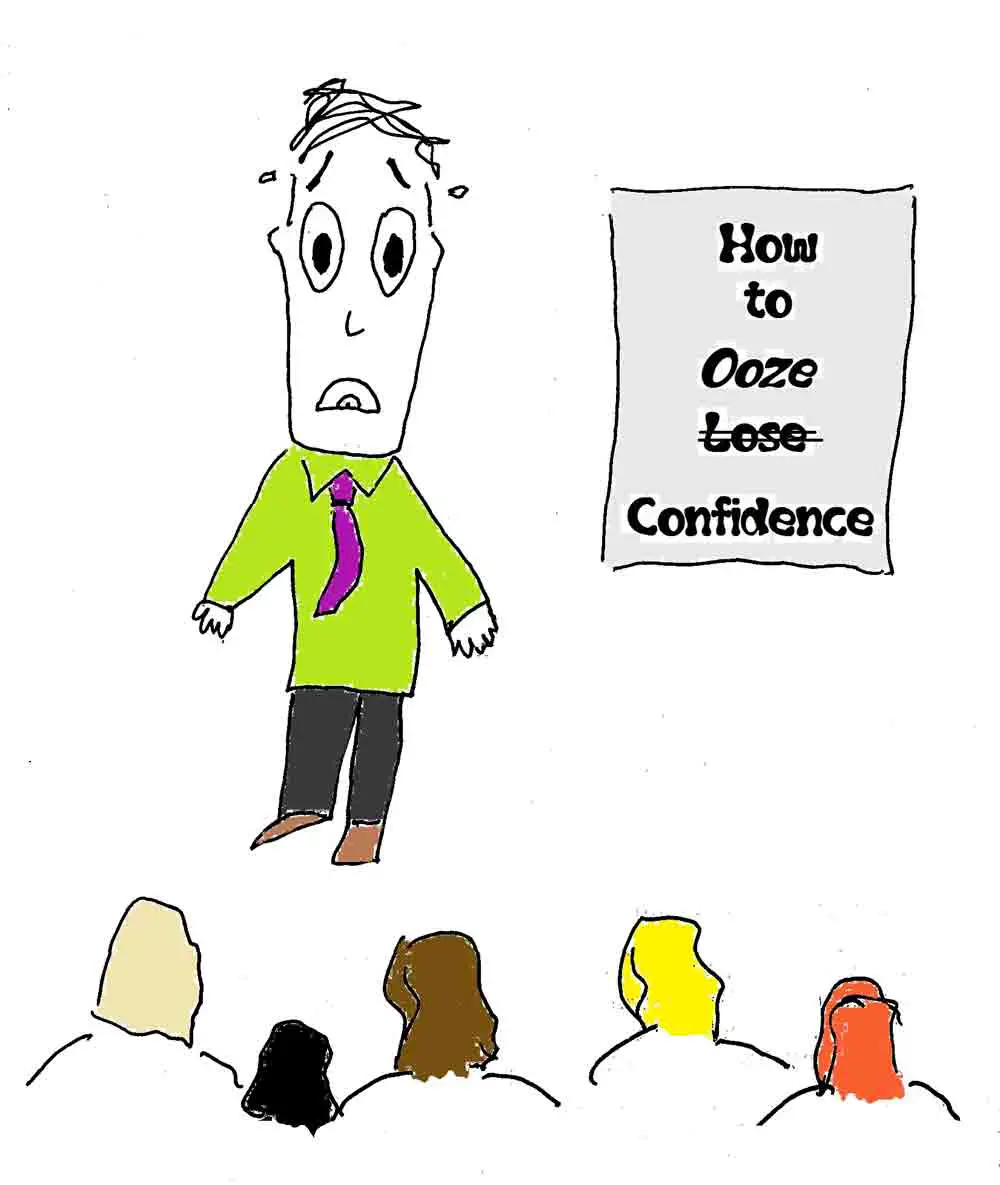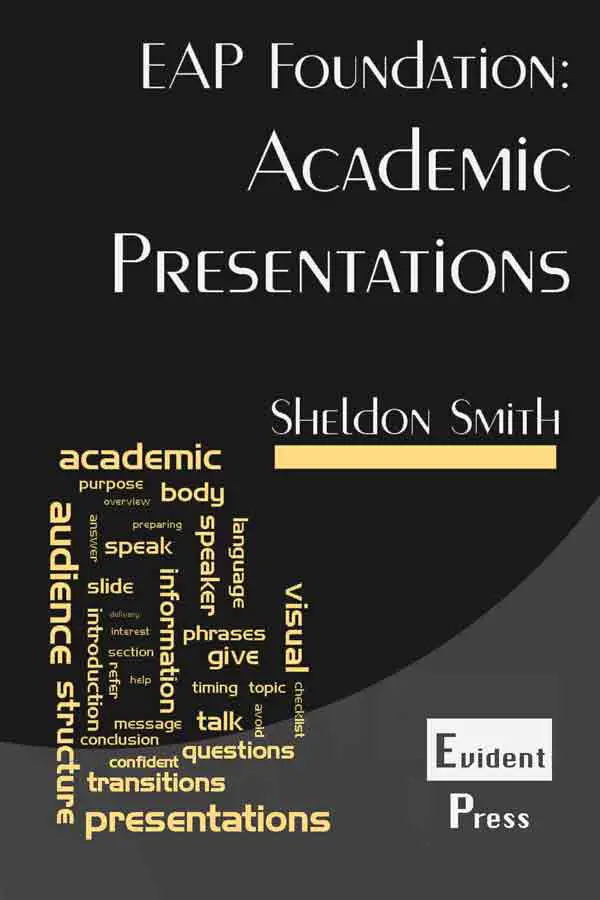Show AWL words on this page.
Show sorted lists of these words.


 







|
 Podcast is loading. Problems? Too slow? You can also access the Podcast by
clicking here.
Podcast is loading. Problems? Too slow? You can also access the Podcast by
clicking here.This message will disappear when then podcast has fully loaded.
The message you give with your body is as important as the one you give using words. There are two main messages which your body can give during a presentation: that you are confident about your topic, and that you are not confident. The latter is much easier to achieve; but the former is what makes for an engaging presentation.
Body language, both good and bad, involves many different elements. The most important ones are:
Each is considered in more detail below.
Posture

Standing well allows you to control your breathing and voice production. You will feel better, sound better, and look better. Also think carefully about where your hands will be and what you will do with them.
- stand up straight
- hold your hands in front of your body or behind your back
- avoid putting your hands in your pockets
Position
The most important part to remember about delivering a presentation is: face the audience! The collocation 'give a presentation' is important. Think of 'give a present' or 'give a gift'. You would not give someone a present with your back to them, and yet many students give a presentation this way, because they spend too much time talking to the screen or their notes. If you need to turn away, for example to look at the screen, then stop talking, look at the screen first, and face the audience again when you continue speaking.
- face the audience
- avoid talking if your back is turned
- avoid talking to the whiteboard, PowerPoint screen, or your notes
Movement
How much or how little you move during a presentation is also important. Remember that you are the energy of your presentation, and you therefore need to move in order to convey that energy to the audience. At the same time, you need to be careful not to move too much. As noted above (under posture), what you do with your hands is also crucial. They will move a lot during your presentation: to count, to stress important points, to demonstrate something physical. They may move places you are not aware of (e.g. touching your hair), so be careful.
- use gestures to stress important points
- use hands to demonstrate or to count (e.g. 'There are three reasons for this...')
- avoid moving too much, as this is distracting
- avoid standing completely still, as this is boring
- avoid nervous gestures such as touching your hair or glasses
Eye contact
Eye contact is important because it creates a relationship between the speaker and the audience. It encourages the audience to listen, and it helps the speaker to relax.
- look at the audience as much as you can
- try to include all members of the audience
- avoid focusing on just one side of the room
- avoid focusing on just one person (e.g. the teacher)
- avoid talking to your visual aids or notes
Summary
It is useful to remember that looking confident and feeling confident are not the same. Almost everyone gets nervous when they have to speak in public. But not everyone shows it. Use strong body language, including good posture, good positioning, confident movement, and good eye contact, to help you appear confident (even if you are not!).
Checklist
Below is a checklist for body language. Ask a peer to use it to assess you when you practise. You can download a copy of the checklist from the speaking resources page.
| Item | OK? | Comments |
| Posture is confident (standing up straight) | ||
| Hands are held in a comfortable position | ||
| Position is good (facing the audience, not talking to the screen or notes) | ||
| Movement is natural (not too much or too little) | ||
| Hands are used well (to emphasise points, to count, to demonstrate) | ||
| Nervous gestures (touching hair/glasses) are avoided | ||
| Eye contact is maintained throughout the presentation | ||
| The speaker looks at the whole audience (not just one or two people) | ||
| The speaker avoids talking to the screen/notes |
Next section
Read more about delivery in the next section.
Previous section
Read the previous article about presentation language.



